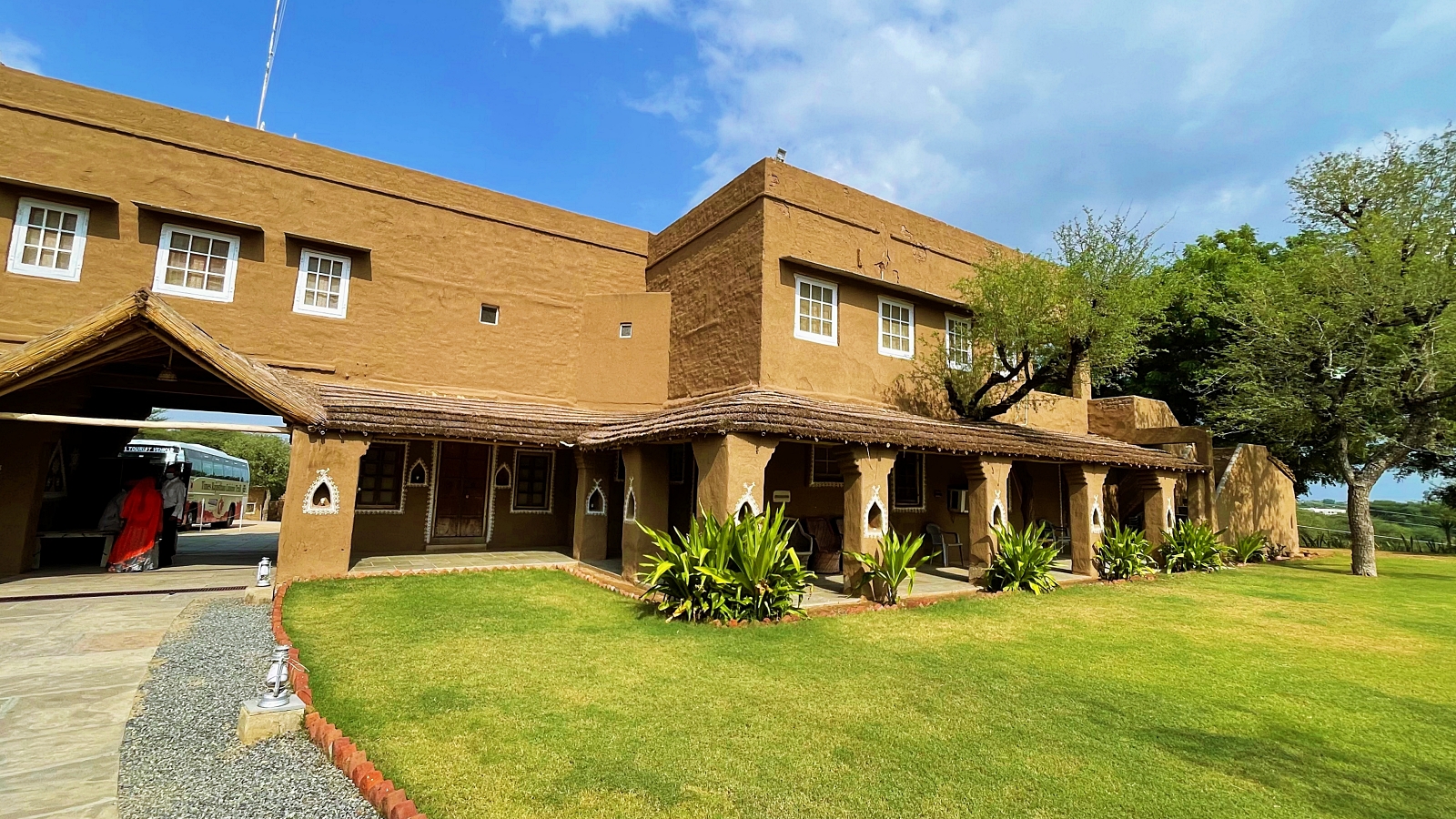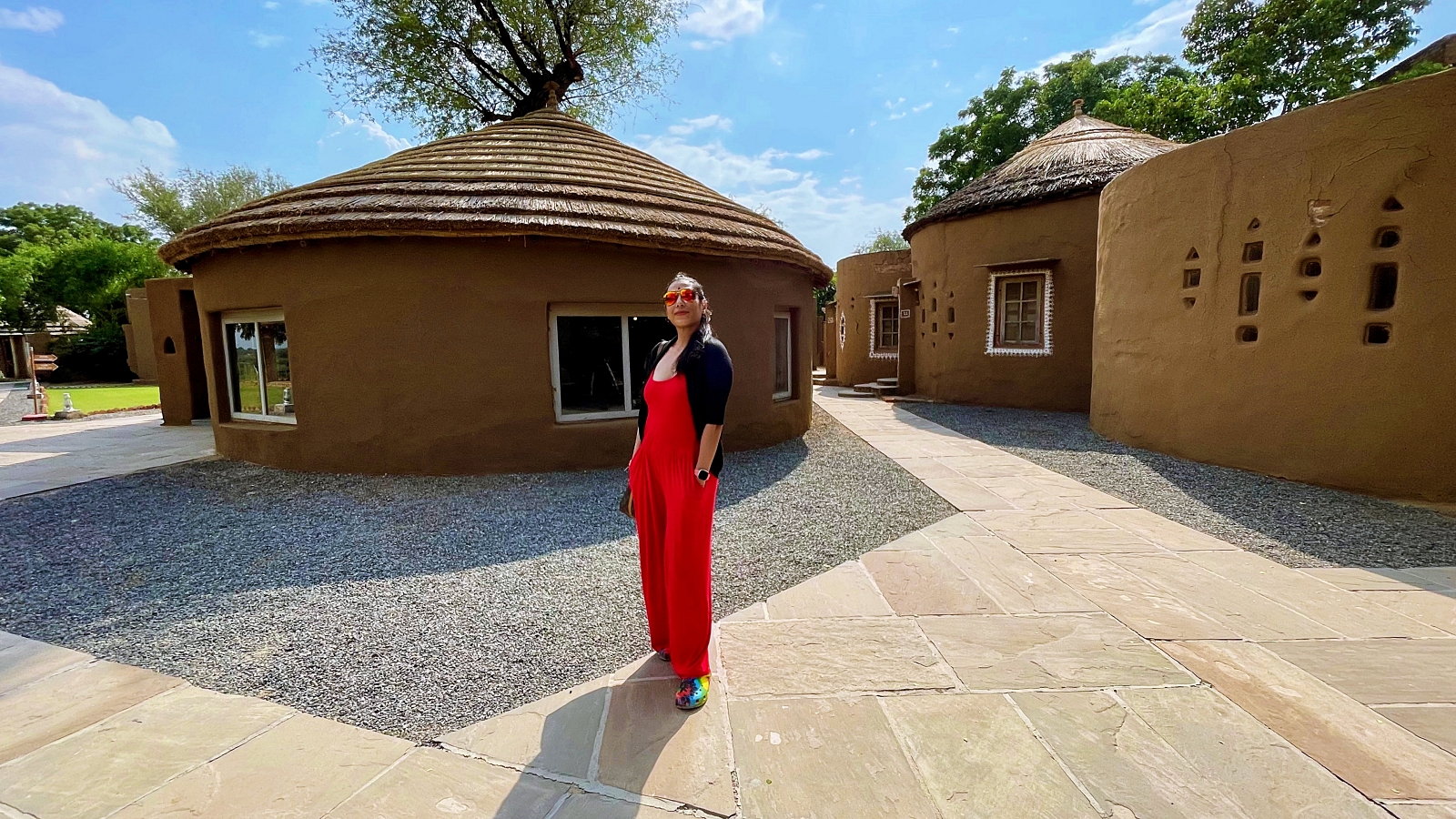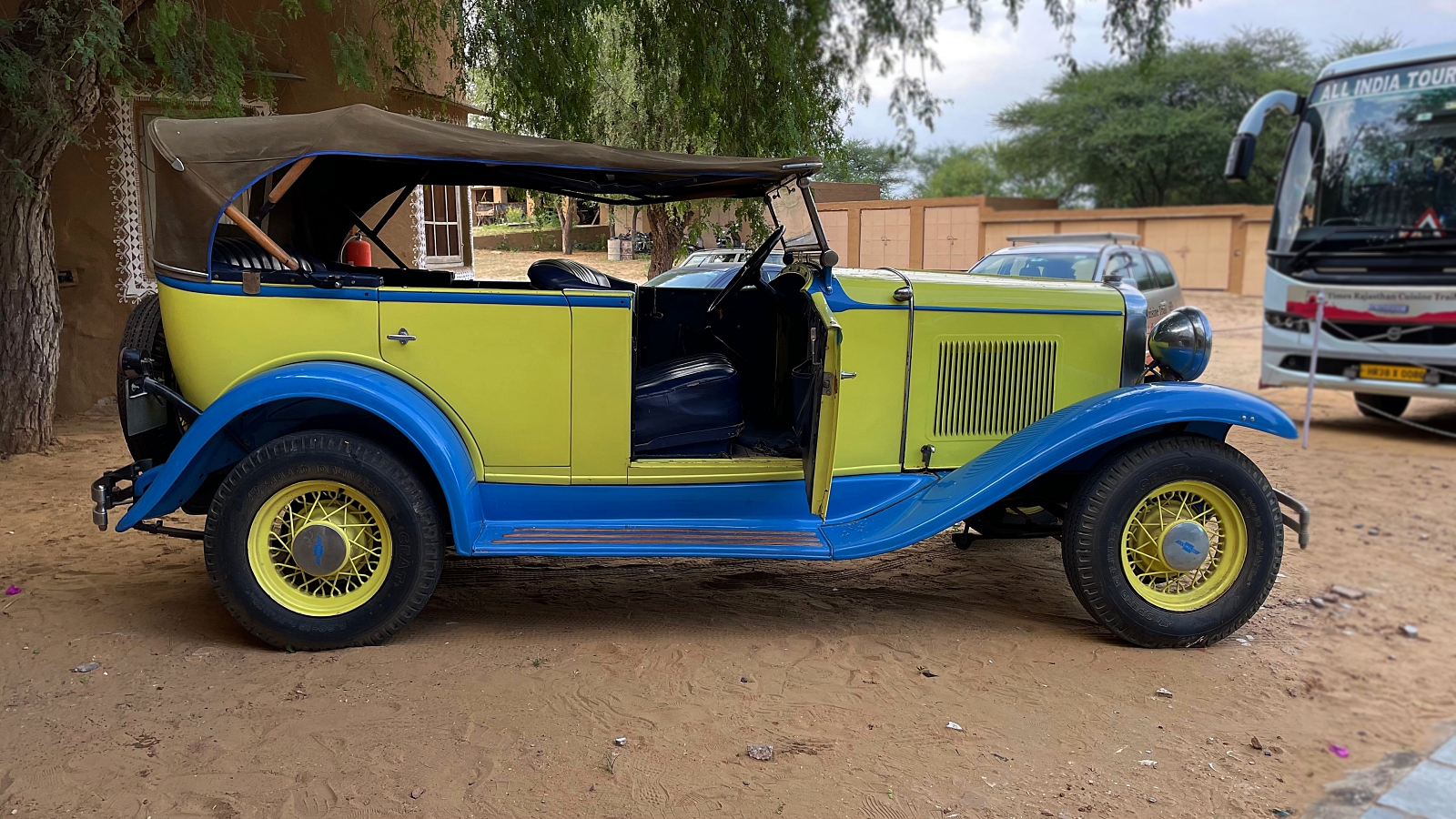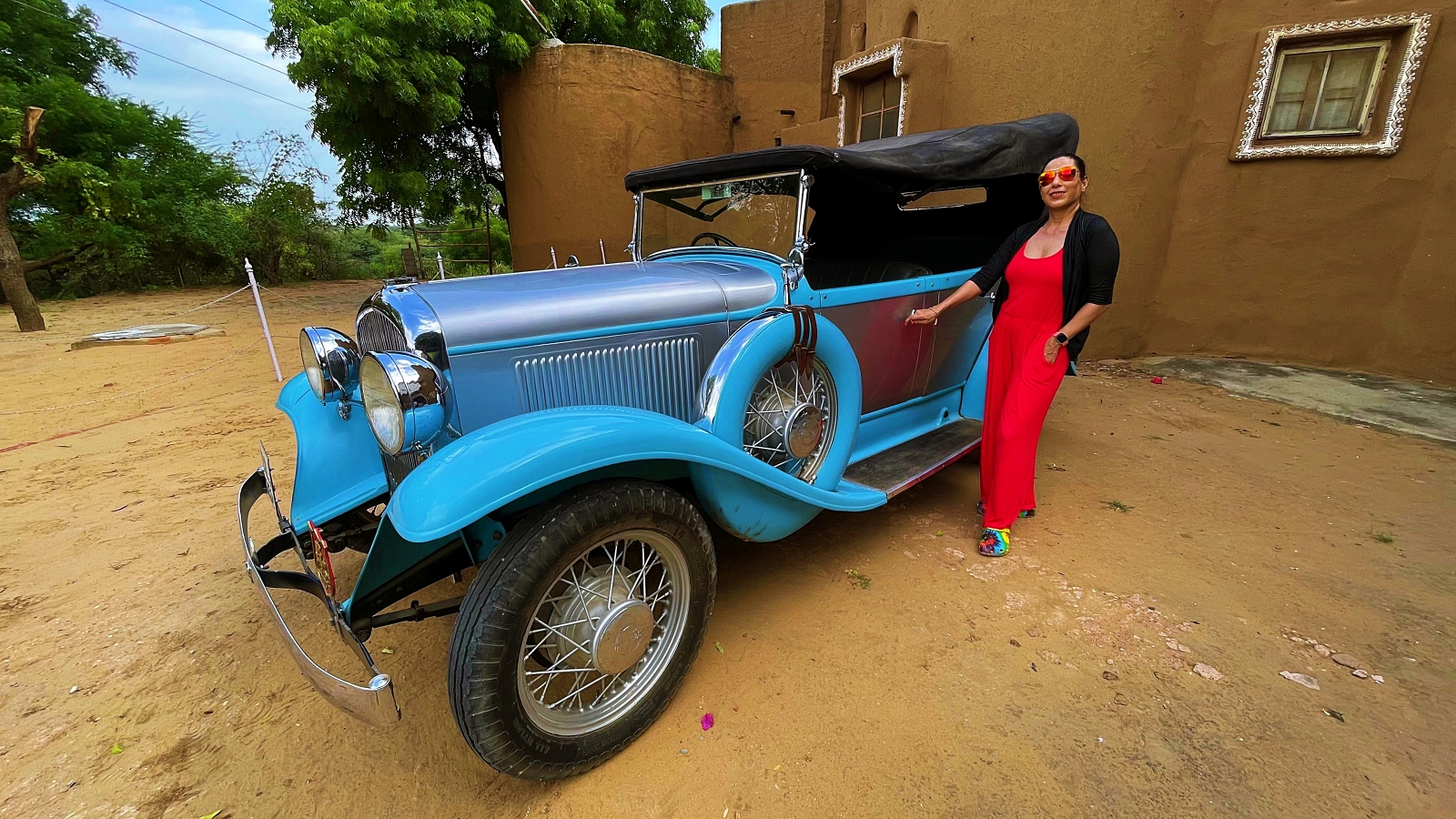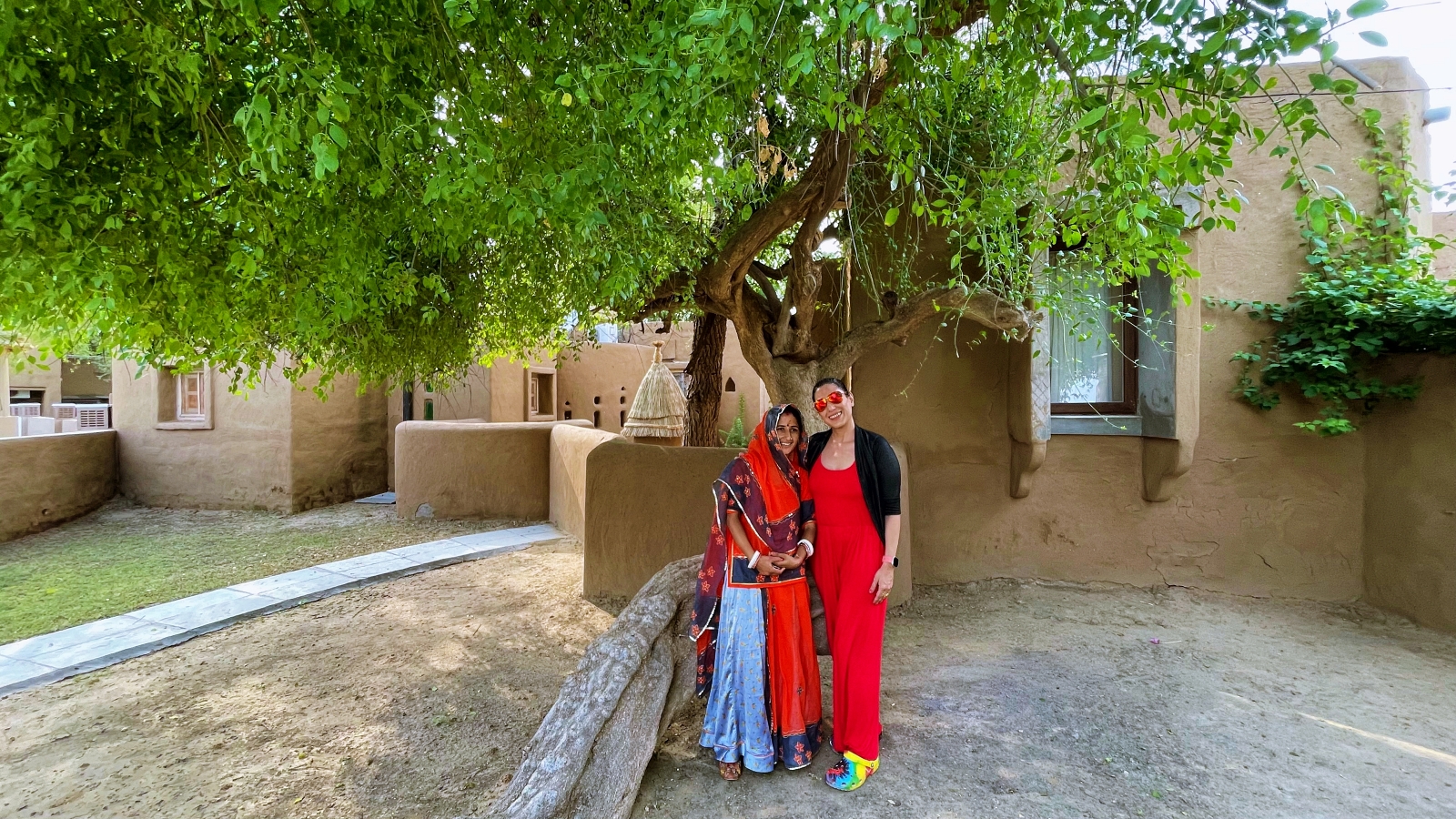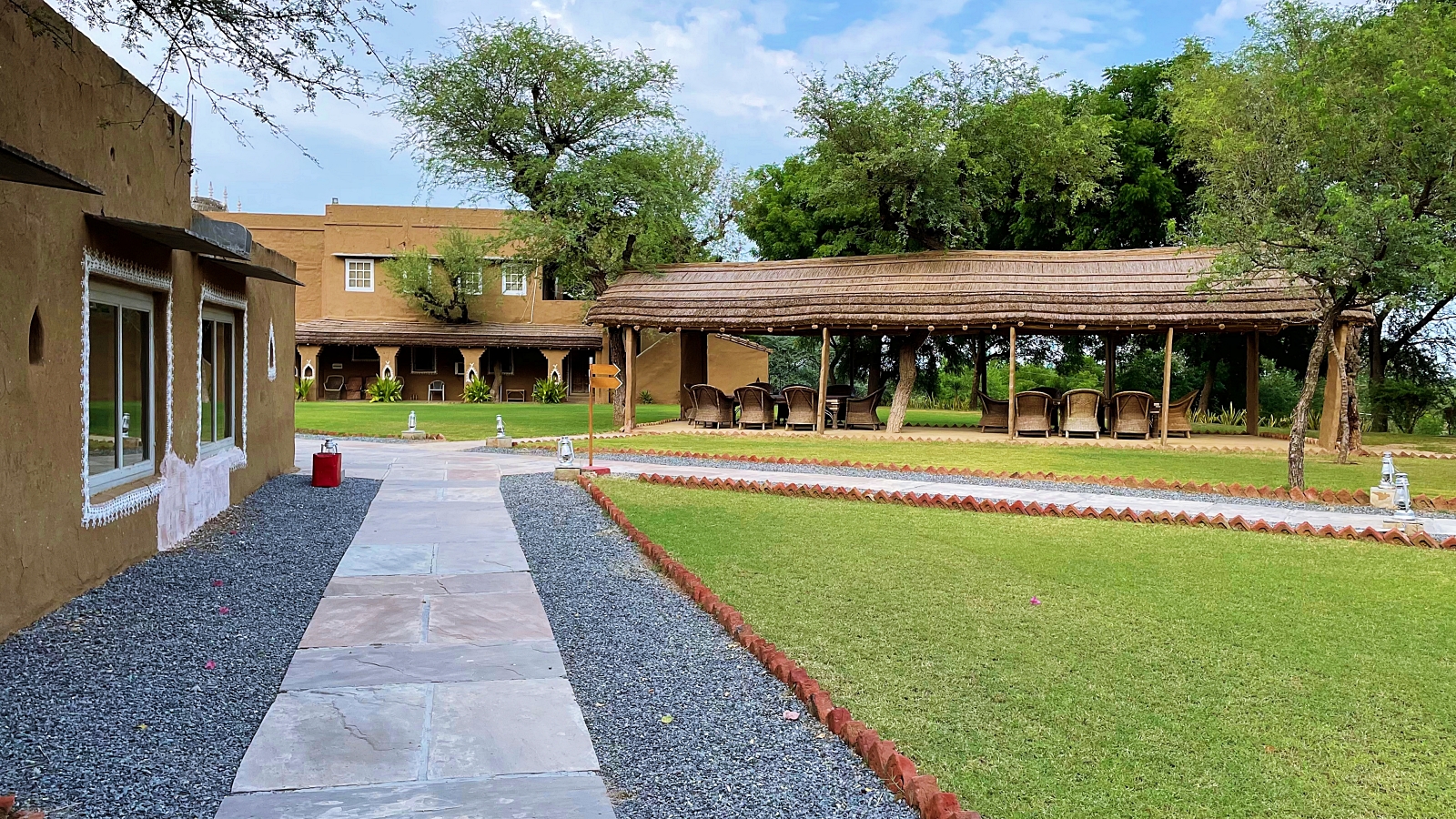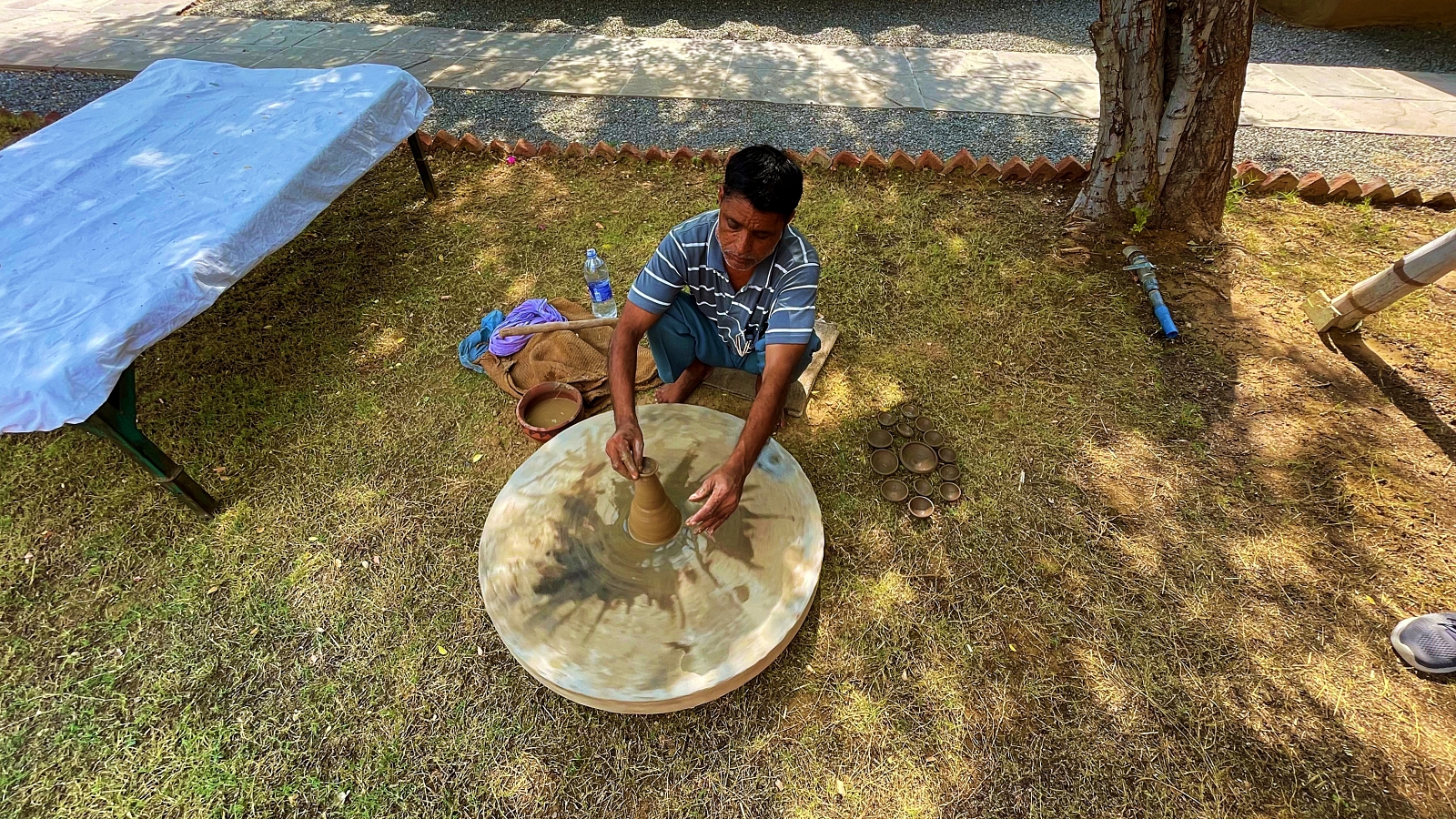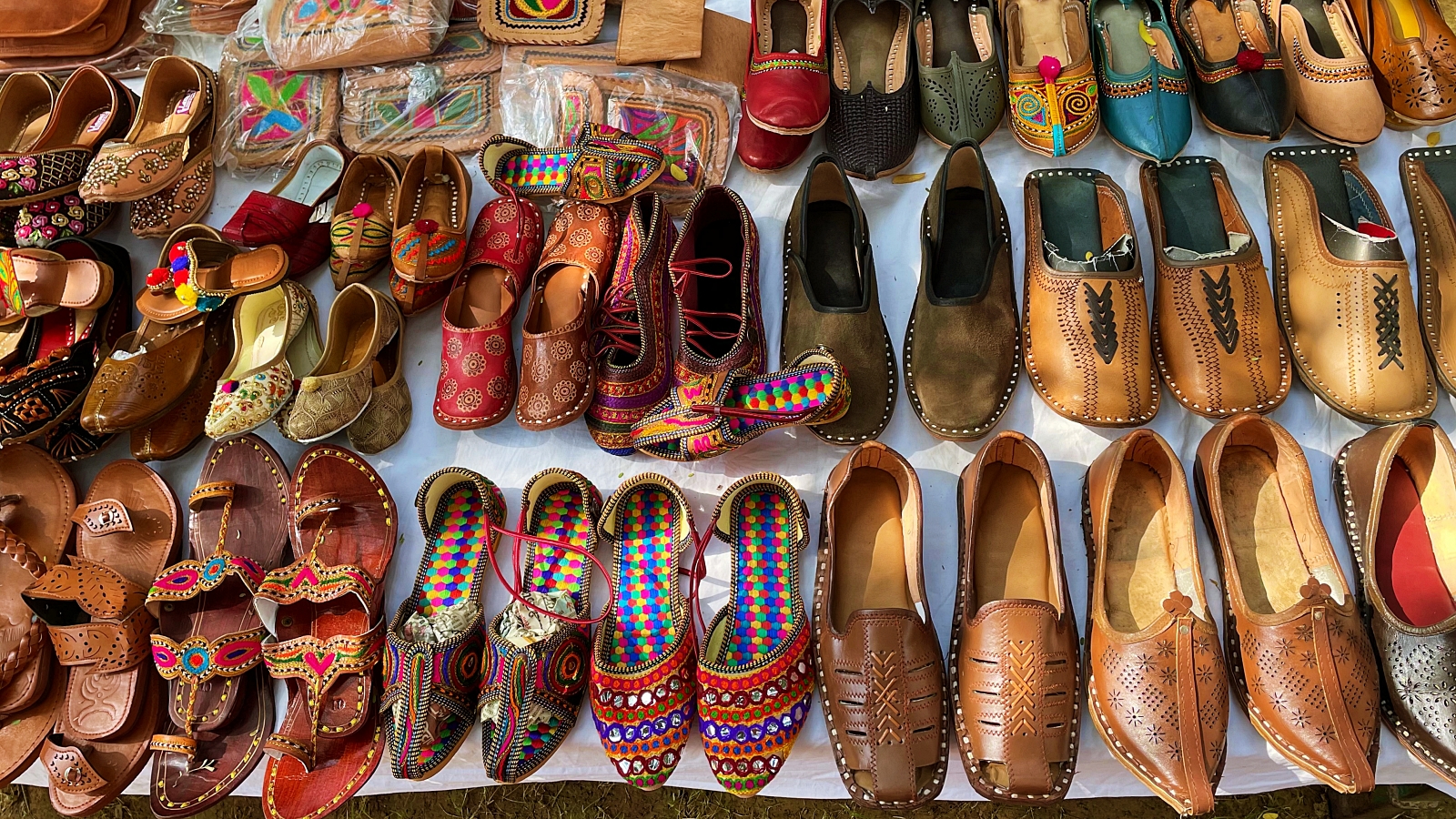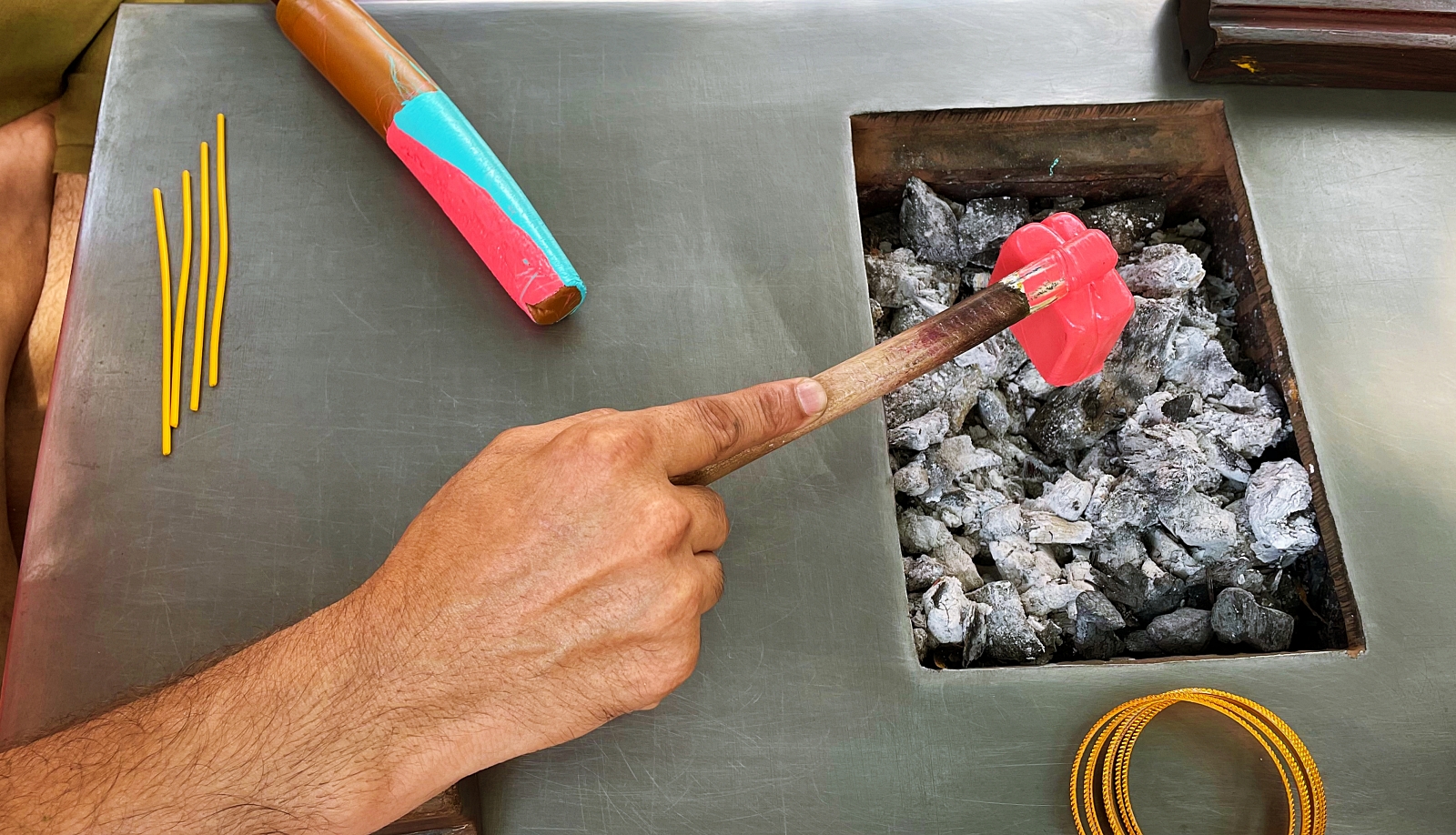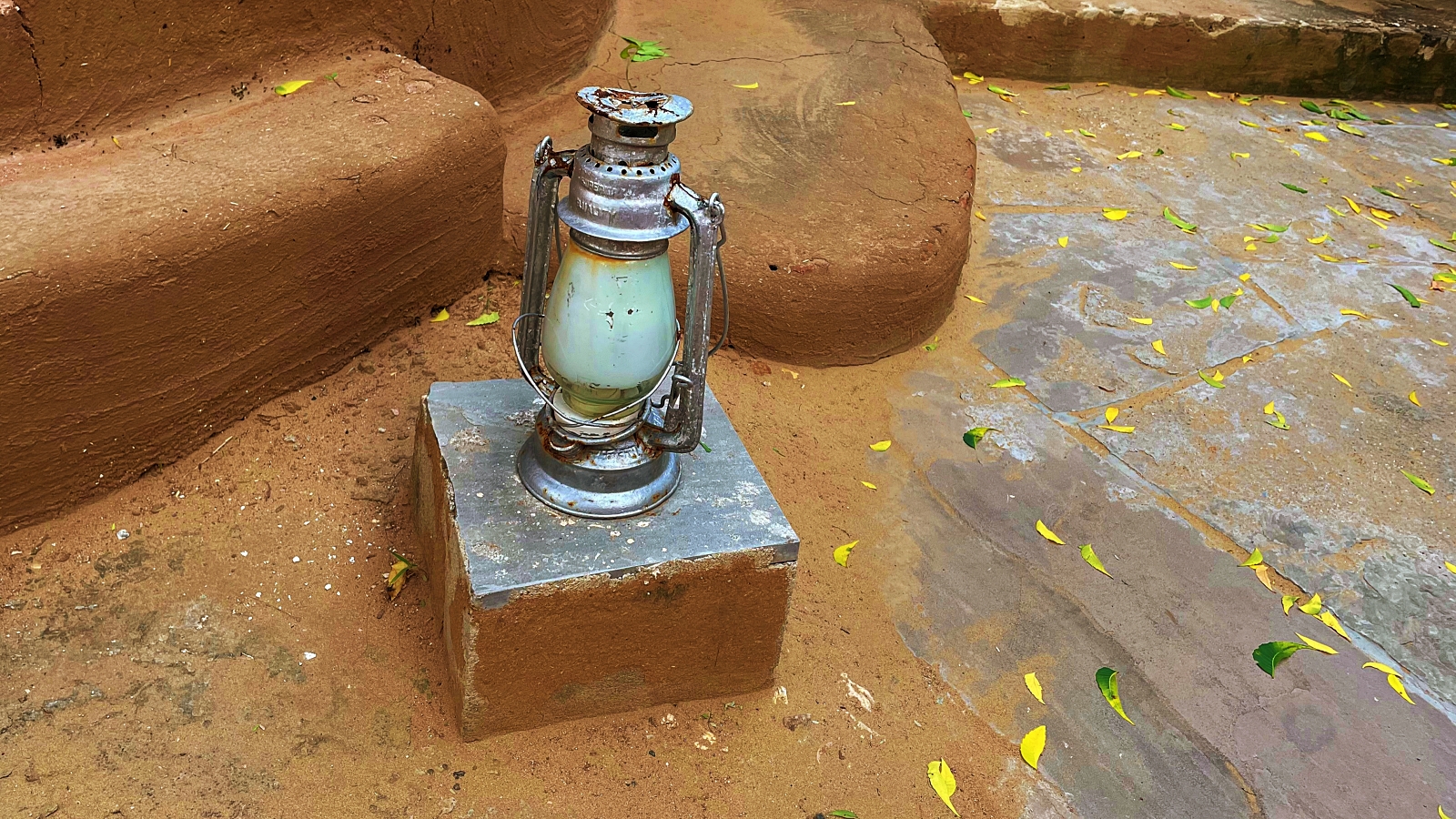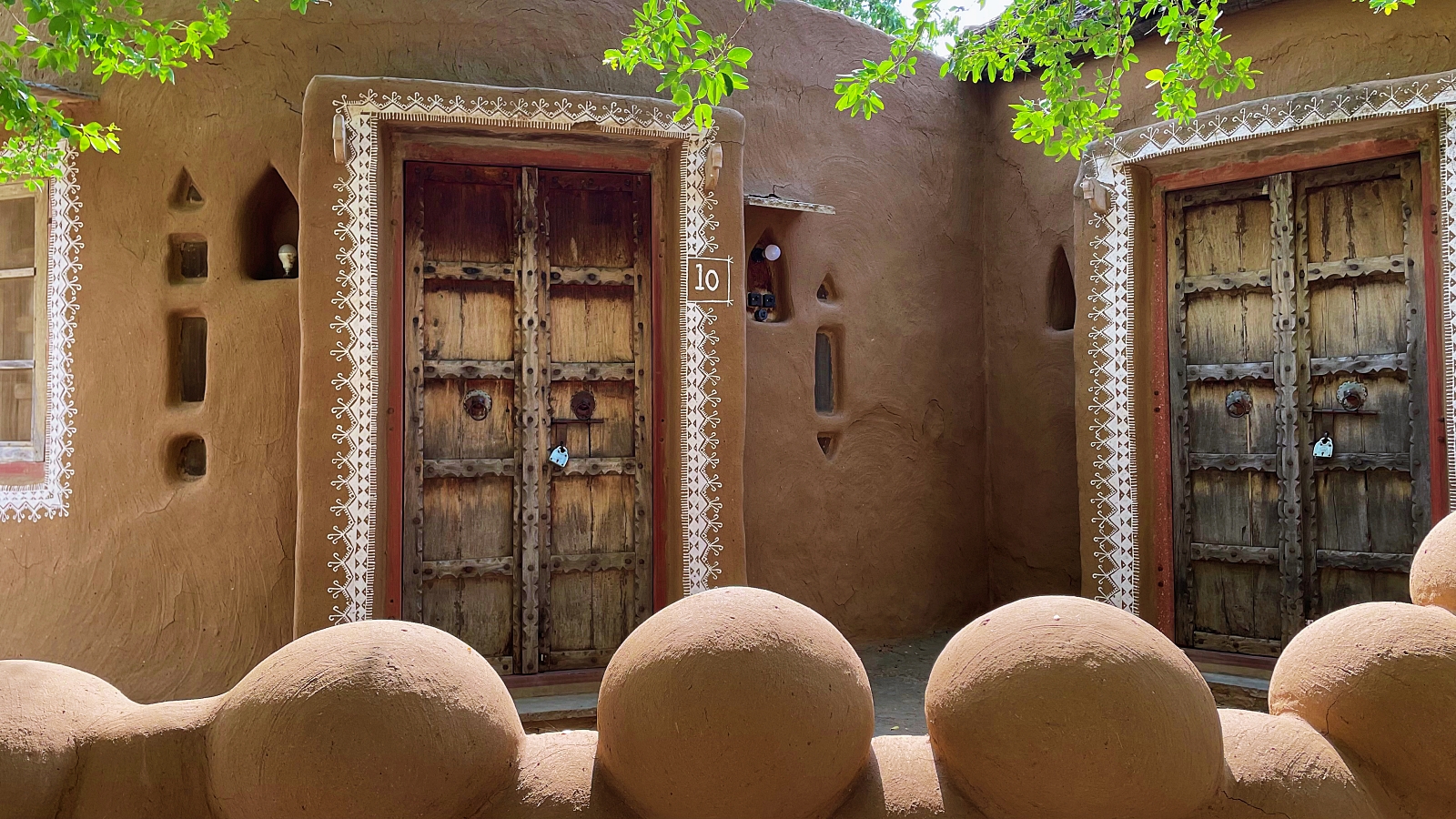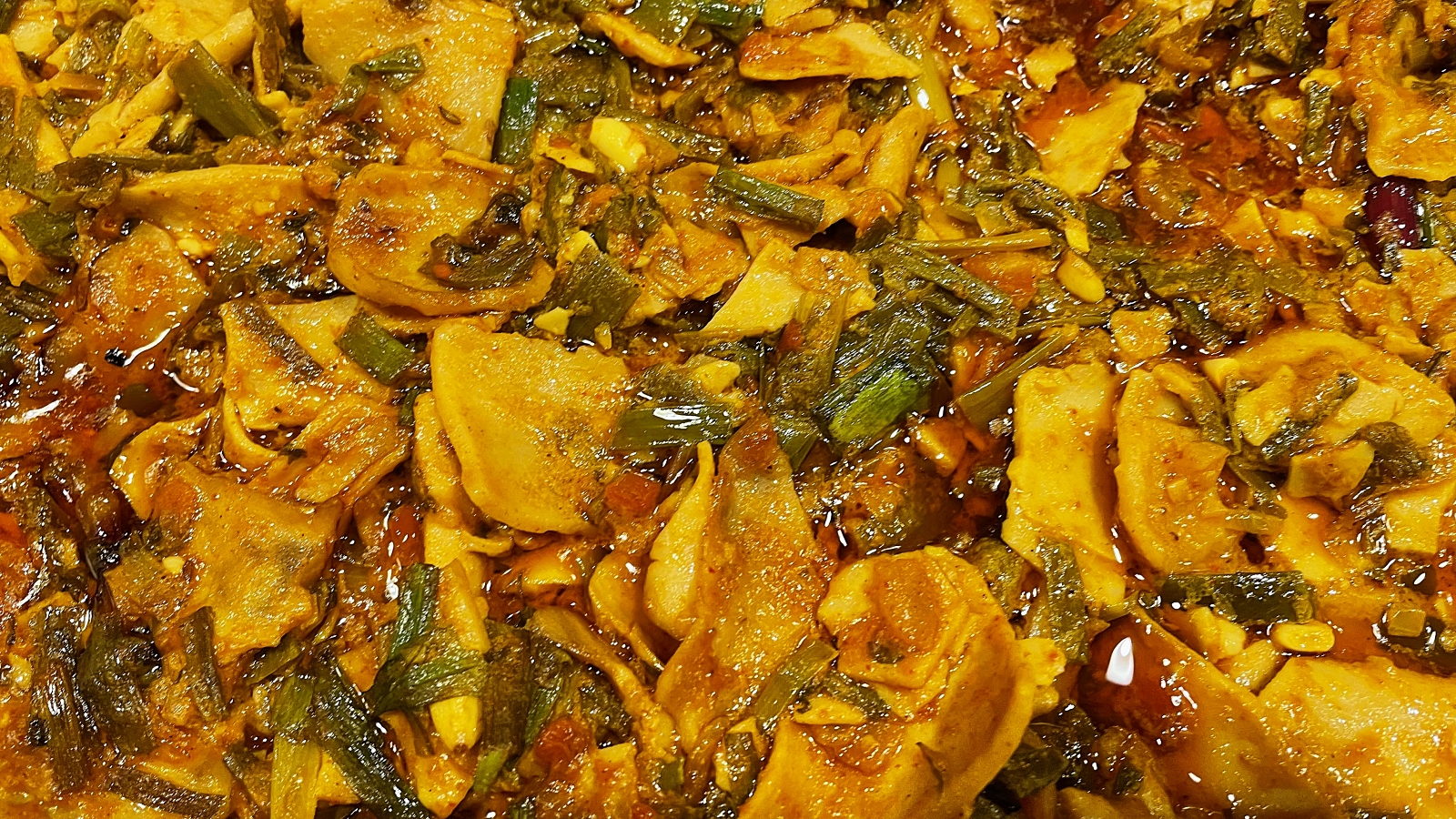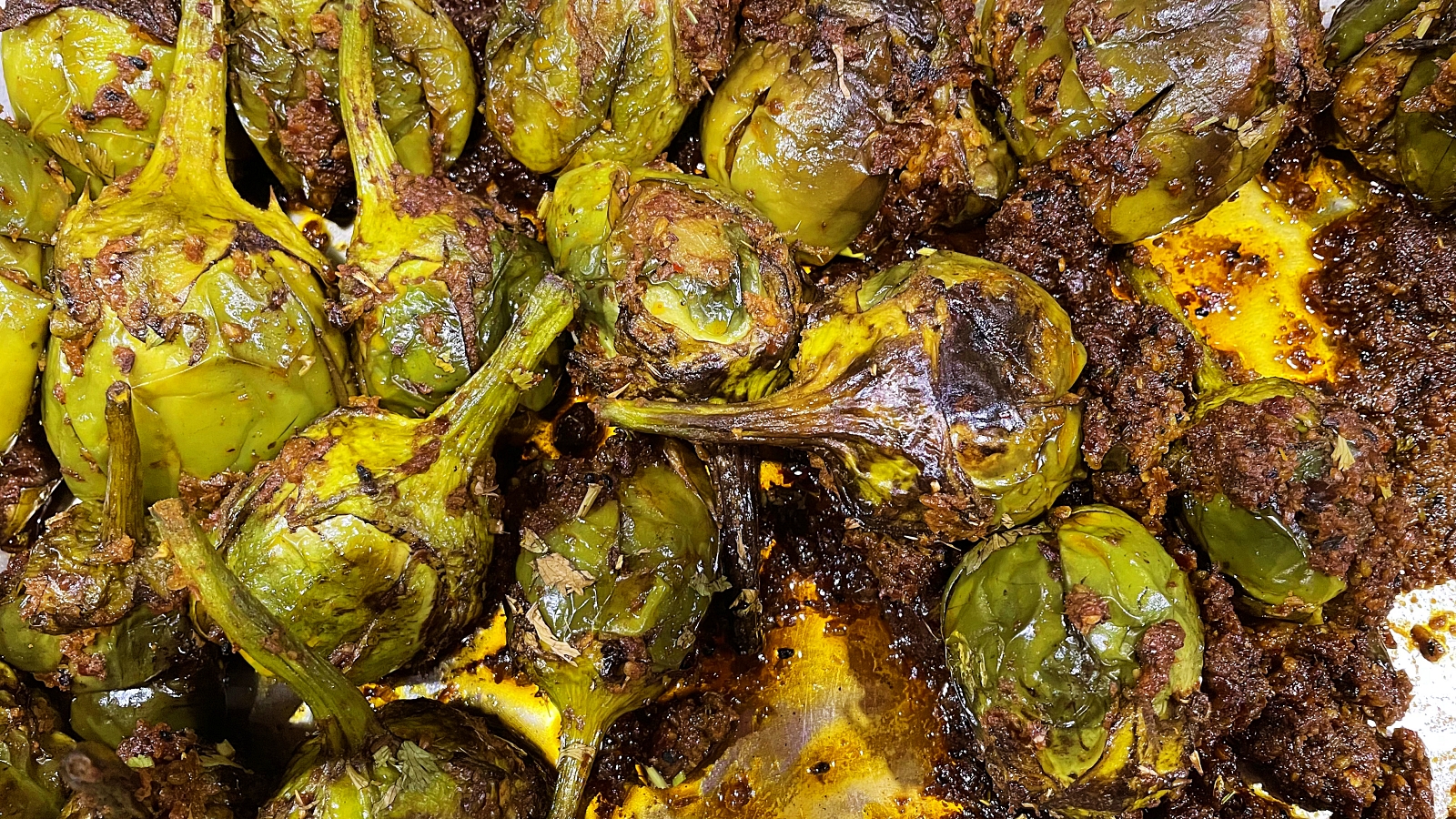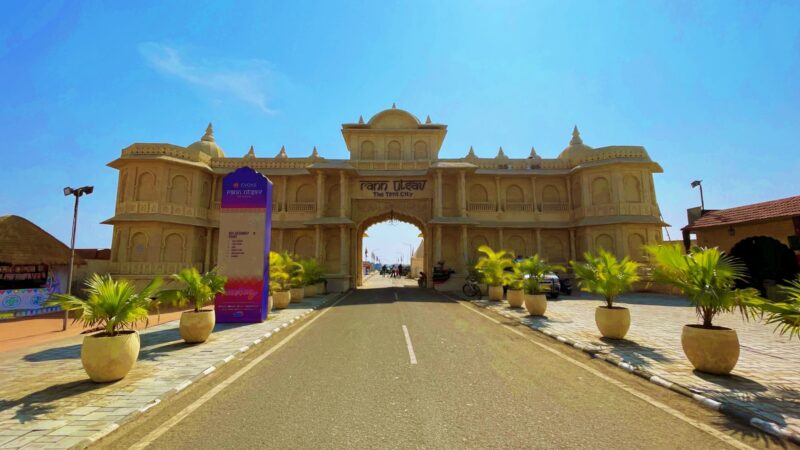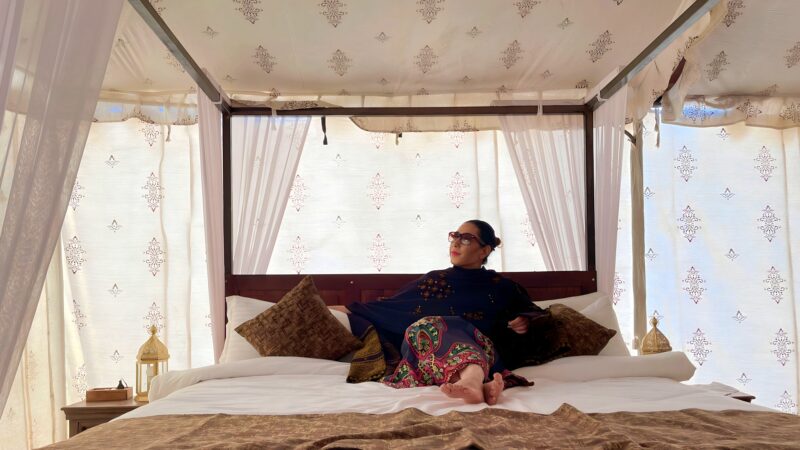Mandawa Desert Resort – Sand, Colours, and all things Shekhawati
The buzz and bustle of city life fade as we journey three hours from Jaipur to Mandawa, a colourful village in the Shekhawati region of Rajasthan, rimmed by the Aravalis and the desert sands. As a welcome to the Desert Resort, which is situated on a road that turns right from the Mukundgarh marg and has an intriguing horse crossing signboard to catch your attention; the only sound I hear is that of a local couple singing a folk song of Rajasthan. It was a pleasant surprise to see several horses grazing on this pathway and learn that the area is a gateway to horse trails that allow tourists and experienced horse riders to ride their mounts while camping.
Marwari horses, camels that amble across the dunes, and cows at the resort’s on-site dairy farm are all owned by the establishment. In fact, during your visit, you can experience the thrilling yet conventional lifestyle of the desert by going horseback riding or going on a camel safari across the dunes. Additionally, they arrange camel cart excursions to see Mandawa from a different angle. I’m here at the invitation of the Rajasthan tourism board and Times of India to experience the best of the Shekhawati culture.
The Desert Resort is entirely composed of clay structures dotted with exquisite white artwork. Two vintage cars flank the entrance: one is a lime green Chevrolet convertible with a flying lady hood ornament, and the other is a blue Plymouth. And yes, you are welcome to ride these classic cars from the royal family’s collection as a hotel guest. I was met by the resort staff with rolled cold towels as soon as I turned my focus away from the elegant vintage cars. However, it was the refreshing Bela Sharbat which helped beat the heat while a Bhil couple sang Rajasthani traditional songs in the background.
The lady singer was dressed in a vivid crimson Ghaghra Choli and covered her head with a ghoonghat with floral embroidery. My gaze was immediately drawn to her lacquered bangles and ring. With his head clad in a purple turban and a matching kurta, the husband accompanied her singing by playing a hand-crafted bamboo and coconut shell bow-string instrument called the Ravanahatta. I met with many artisans while strolling through this clay-laden complex as some were making lacquer bangles and others pottery.
An open stall has colourful Jootis (footwear) on sale. While, on the whole, Rajasthan delighted me with its rural charms and melodious tunes; this quaint village setting in Mandawa illustrated the authentic desert appeal. Although Mandawa is greatly overdrawn with Havelis, frescoes, and legends from a regal era, this resort provides travellers with a sense of desert life at every turn.
Nearly all of the hut-shaped cottages at the Desert Resort have square windows and doors, giving the impression that they have popped out of a period drama. Throw in a few lanterns and matkas (clay pots) in the aangan (courtyard), and a village ambience is all set to embrace you. These modest clay dwellings cannot be compared to palaces abounding in other cities of Rajasthan, however, I love the fact that every single material you see here is either crafted by hand or purchased locally.
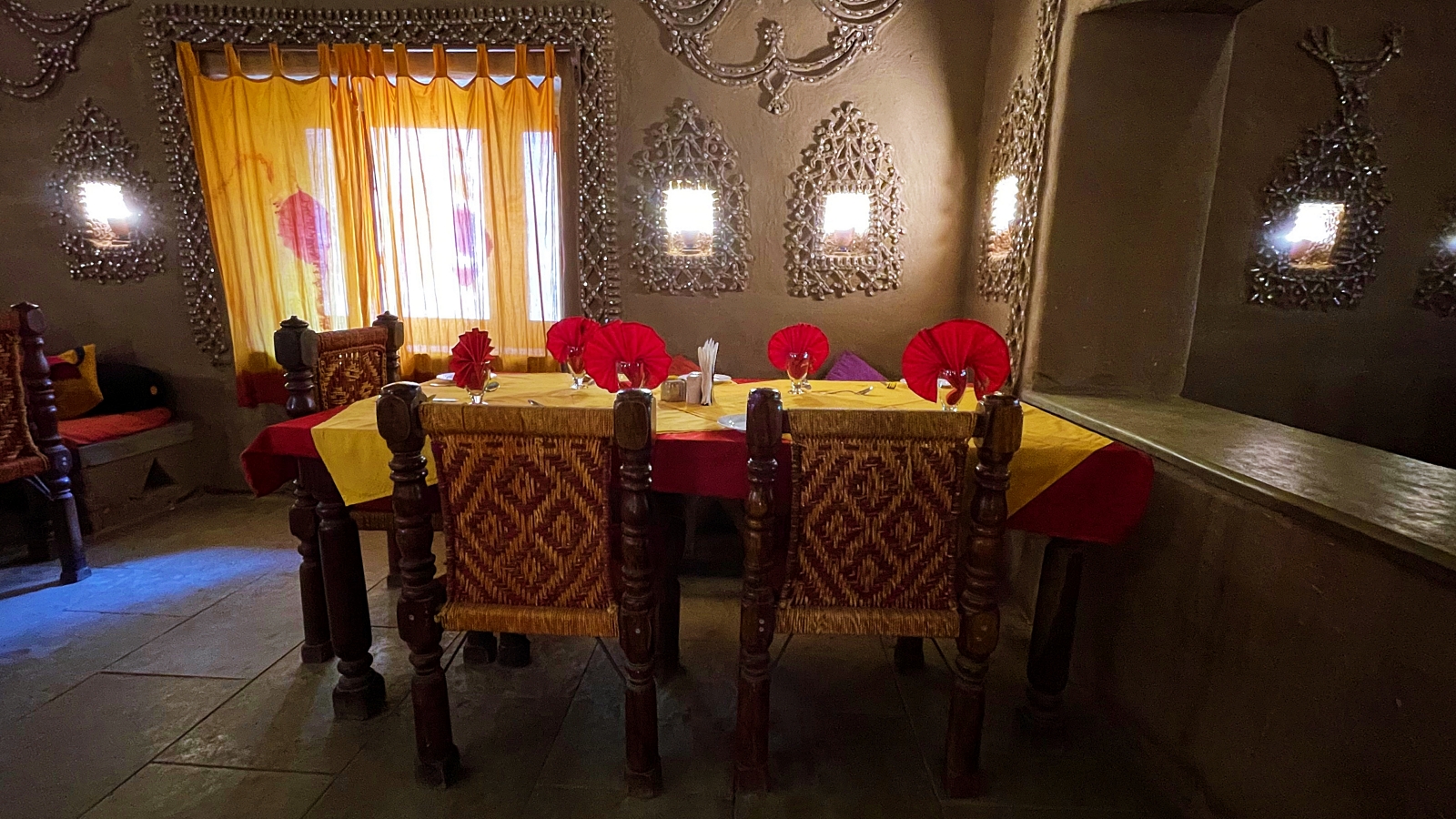
Every nook and corner demonstrates the culture and craftsmanship of the area. Local artists have built the exteriors of the mud-walled hamlet with traditional Mandawa artwork, and even the mirrors blend in beautifully with the surrounding desert. But what makes this location so exceptional is how the Desert Resort familiarises one with the concepts of sustainability and social conscience, in addition to the rich desert landscape. Their farm-to-table eating concept is a monument to their values, and they integrate sustainable living techniques into every aspect of their daily operations. That’s why the meal has a different flavour!
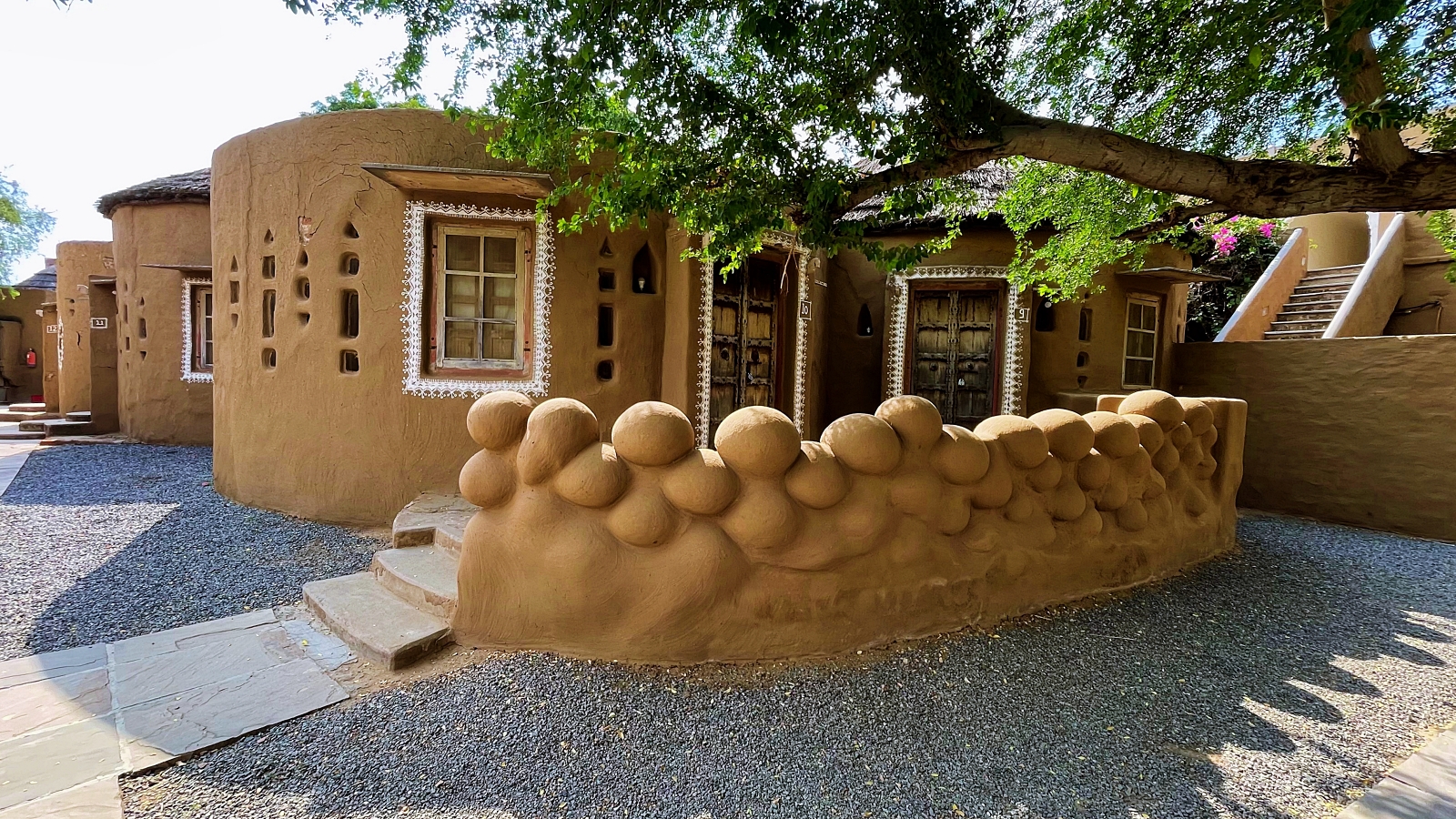
Desert Resort employs locally sourced or garden-fresh ingredients grown on the property, and the on-site dairy supplies milk to fulfil all of the kitchen’s dairy needs. Even the meats are daily fresh purchases. You can even take a trip through the farm to choose the veggies for your desired dishes for a truly authentic farm-to-fork experience. The skilled chefs then transform these indigenous ingredients into delectable dishes utilising conventional cooking methods that preserve the flavours’ originality.
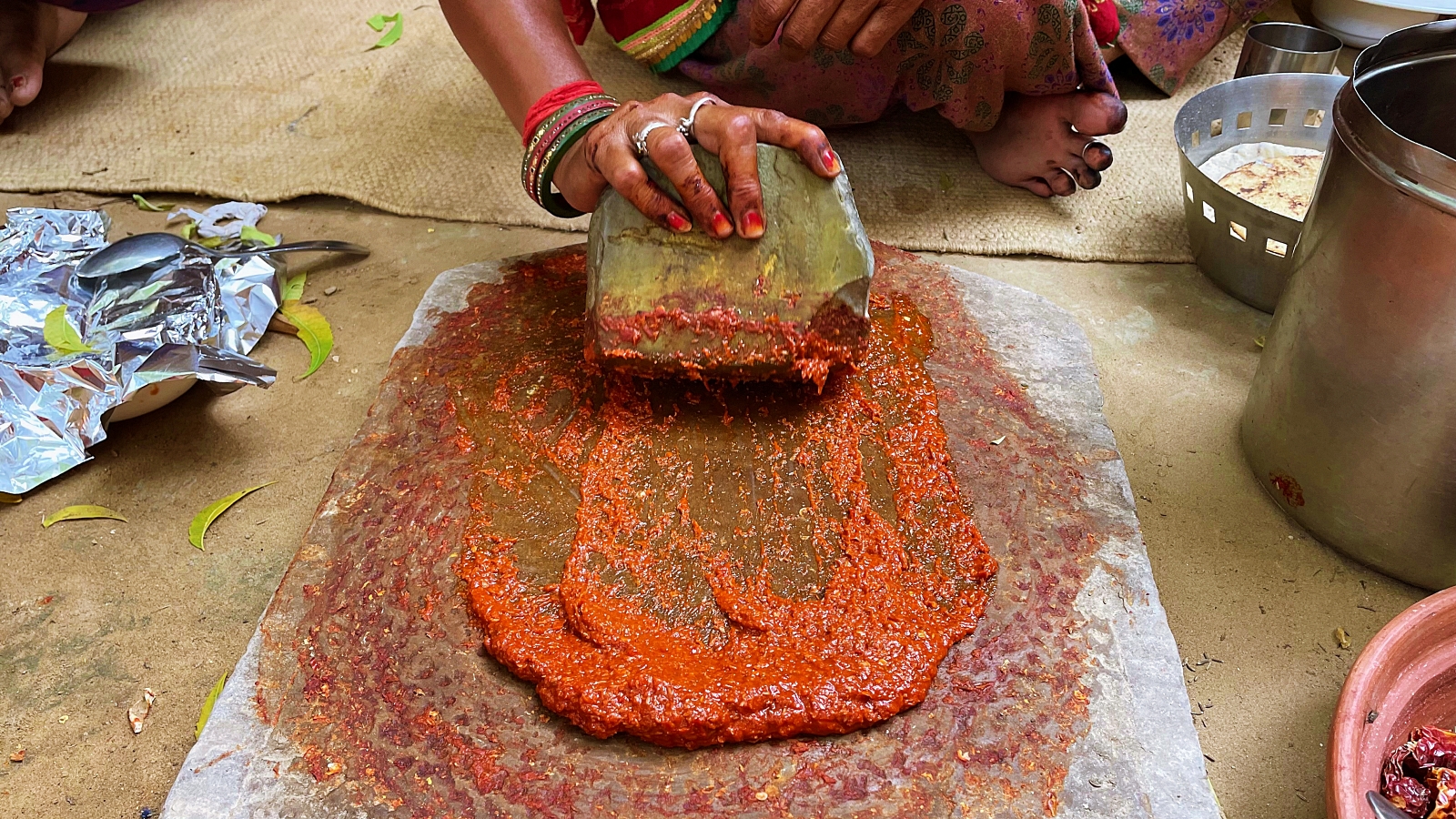
Take the little lanes branching off the kitchen to meet women who hand-grind the ingredients for the lavish meals you relish at the cowrie-designed restaurant. Aabla dining room has grey walls covered in cowrie, a marine mollusc and the seating here flanks cream and crimson accents. The open-window concept lets you peek at other tables in adjoining rooms. The cuisine of Mandawa and I’m referring to the authentic regional cuisine – exceeds standard Rajasthani fare. You see, Mandawa was once a thriving trading town in Rajasthan. These merchants were raised in a wealthy community living in expansive, gorgeous Havelis, and they had equally renowned palates.
I must admit that the vegetarian Shekhawati food I ate here—including dishes like Kadu ka Keema, Anjeer Bhara Kofta, Began ki Lonji, Sev Tamatar, and Rabodi Kanda—could easily convert me to vegetarianism. However, the spicy flavours of Khade Masale ka Ghosht and Bajare ka Chicken Soyta made them just as delectable. As you finish your lunch, be sure to try their Lahsoon (garlic) ki chutney, which the villagers freshly hand crush in the backyard. The staff will tell you that the condiment’s flavour is enhanced by the freshness of the garlic, which gives your entire meal a flavour boost.
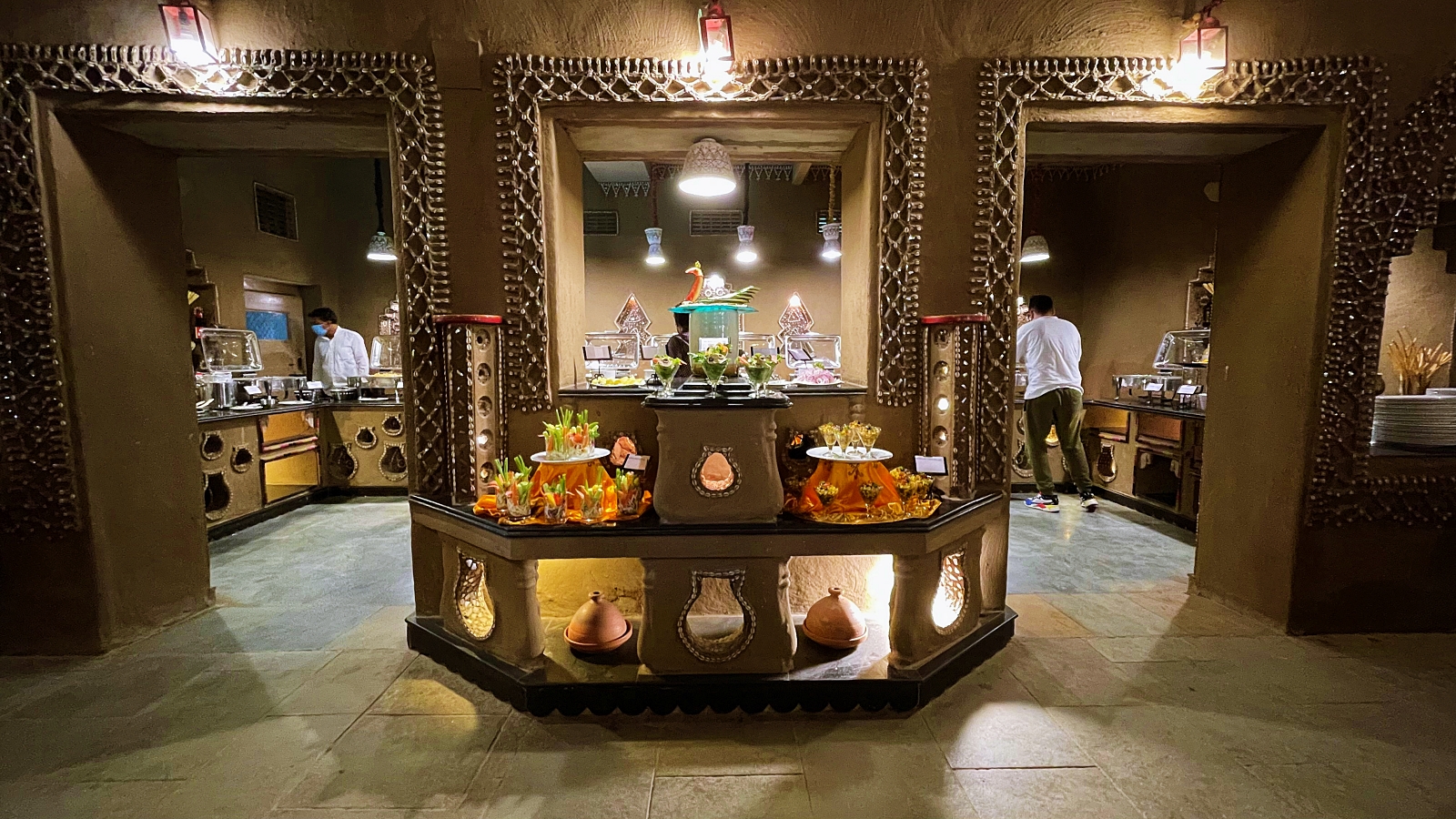
In case, your palette can’t handle all these Rajasthani spices, Aabla also offers a selection of continental salads. This lunch experience sent me on a historical tour of Mandawa life and is the closest I have come to eating authentic Shekhawati cuisine, served in charcoal-heated earthenware. The Desert Resort of Mandawa, with its cluster of cottages, is the most suitable base for exploring the region, and you can choose between an air-conditioned cottage, a superior room or a suite, ranging from ₹10,000 to 20,000.
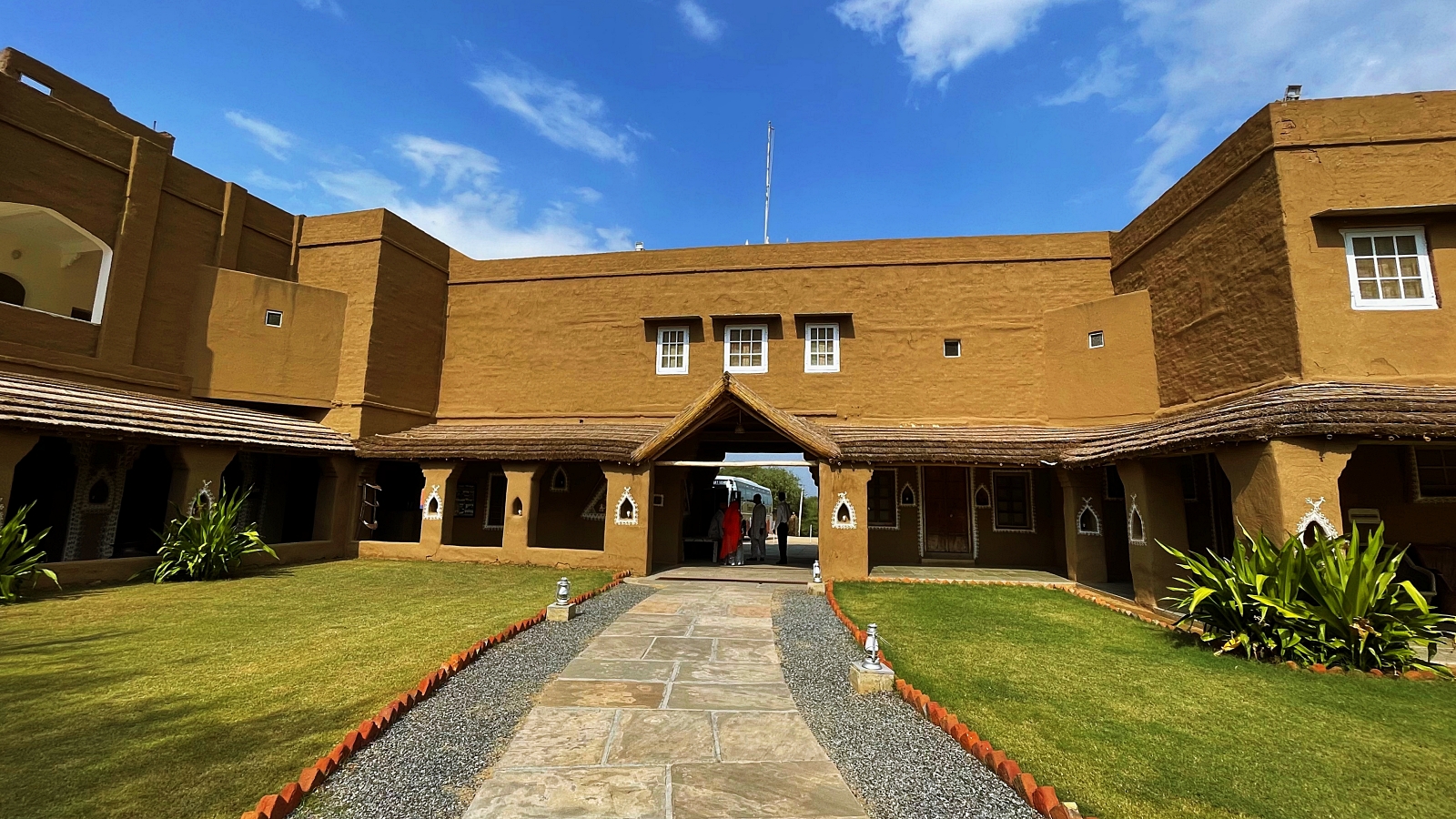
The resort is senior citizen friendly, and most of the cottages are on the ground floor with easy access to all venues. In an effort to promote local people and their art, all of the rooms’ and cottages’ furnishings are handcrafted on-site, from hand-dyed curtains and block-printed bedspreads to chairs fashioned as adaptations of the region’s woven Mudas and Charpais which are stools made from the sturdy stems of local grass.
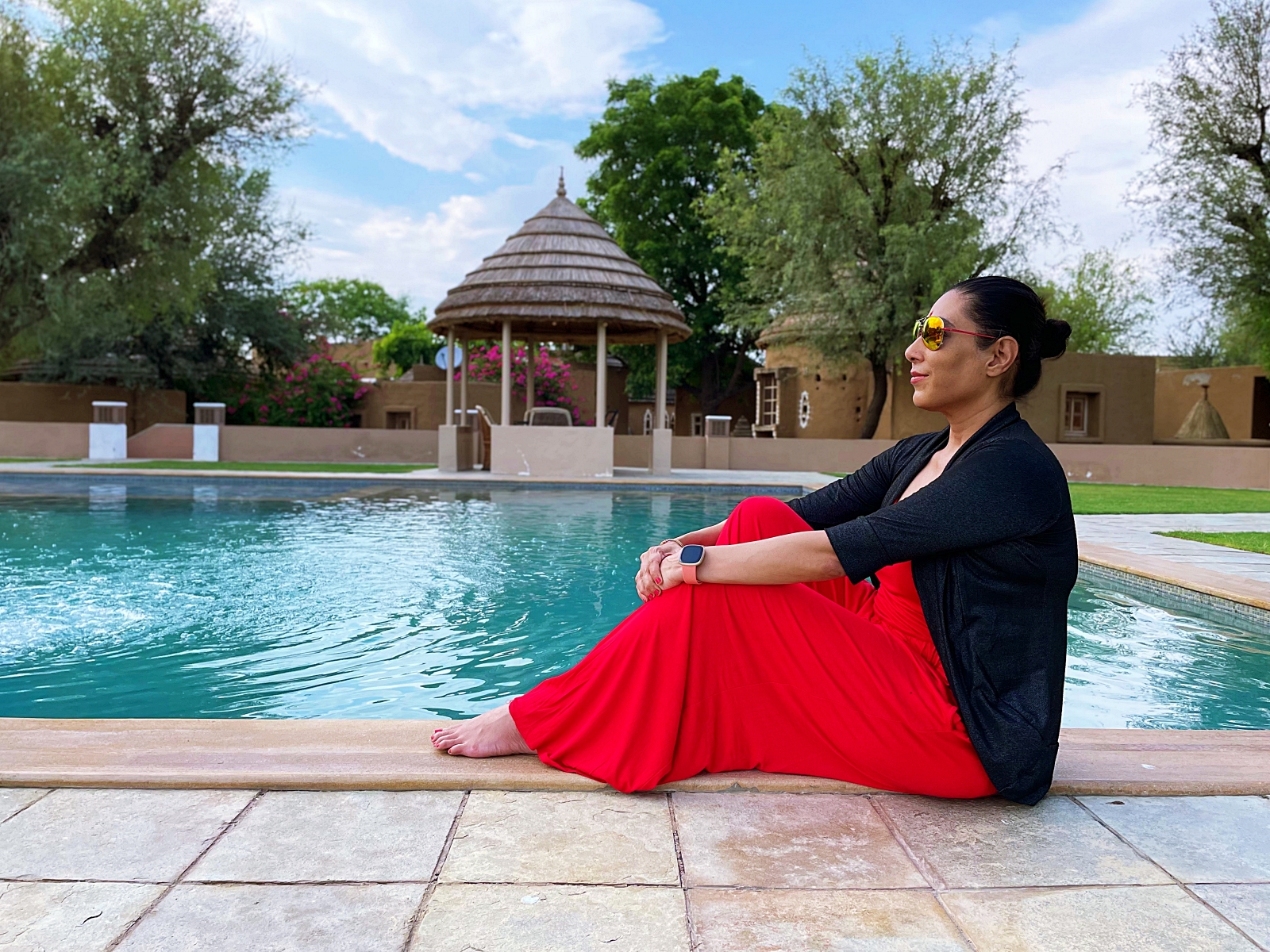
Additionally accessible to visitors of the Desert Resort are a pool and a lounge. The open pool facing the plateau up ahead is fun to jump into. Right next to the pool is a sign for walking trails that lead directly into the thriving neighbourhood vegetation. With their 2.5-kilometre walking circuit, you can admire the desert’s unspoiled natural beauty. The Desert Resort, which occupies an area of more than 100 acres, also has a dairy on-site, solar heating, and an oasis within its enclosure that is supplied with recycled water.
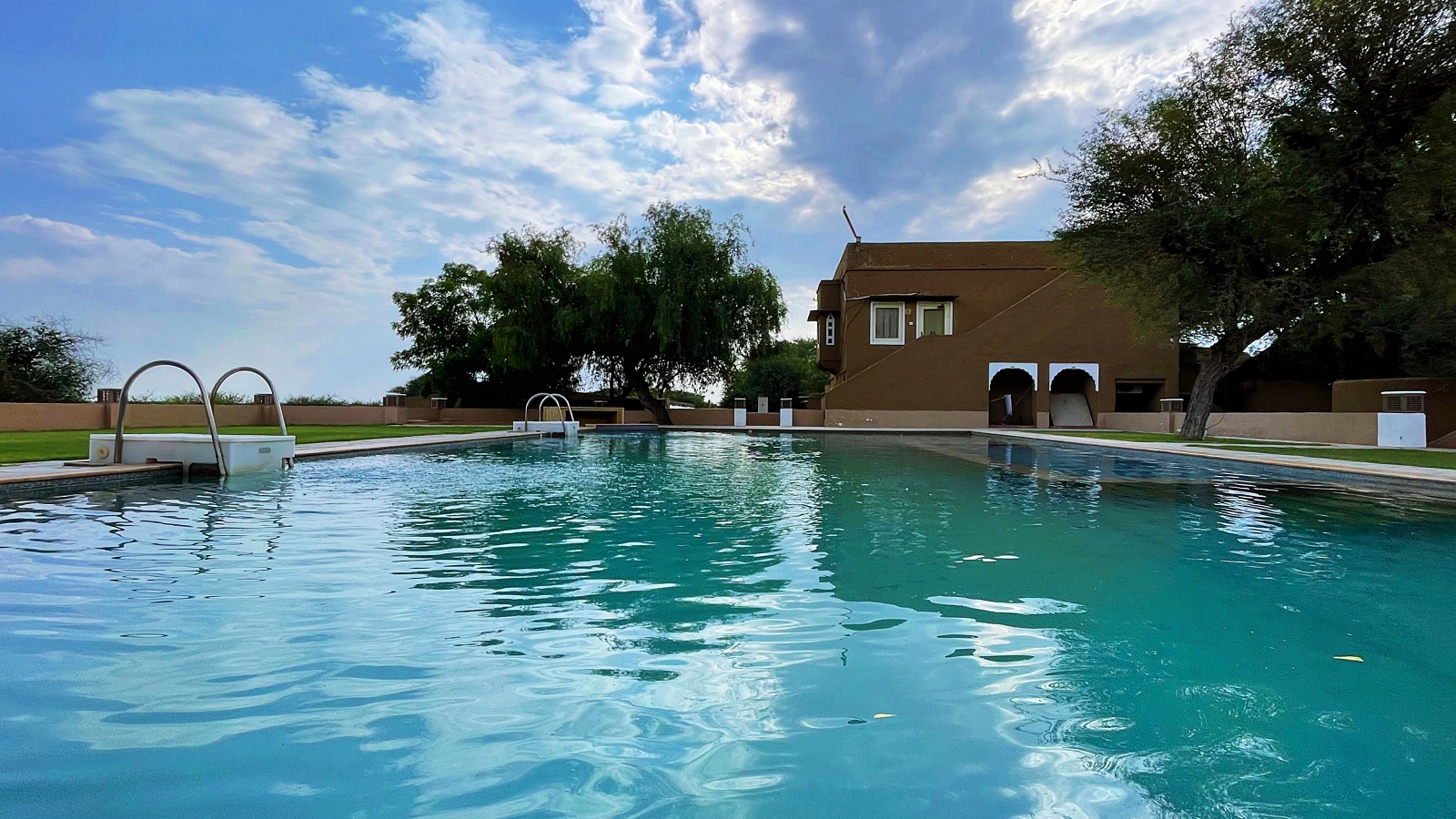
The oasis draws migrating birds and native animals. It’s a great place to observe Coucal, Woodpecker, Hummingbird, Blue Jay, Spotted owlet, Lapwing, Brown and Black Partridge, Fand Grouse, Hoopoe, Thrush, and Desert Wheatear. Desert Resort offers a travel experience that is well above and beyond the norm, even though the name “desert” frequently conjures up a picture of a parched region. The combination of privacy, changing sands, and delicious food offers an allure that makes me want to keep returning time and time.
My favourite part of this property is that it is pet-friendly, so your furry friends can also join you for a fun-filled family vacation. When you arrive, rent a car and drive to the nearby towns to see the Gulab Rai Ladia Haveli, Castle Mandawa, Bansidhar Nevatia Haveli, Sneh Ram Ladia Haveli, Murmuria Haveli, Poddar Haveli, Bala Qila, Double Goenka Haveli, Mahansar Fort, and Sone ki Dukan.
How to get there: Jaipur is the closest airport, Churu is the closest train station, and NH48, NH52, and NH11 connect Delhi to Jaipur and Jaipur to Bikaner, respectively, creating an arc around Mandawa.

